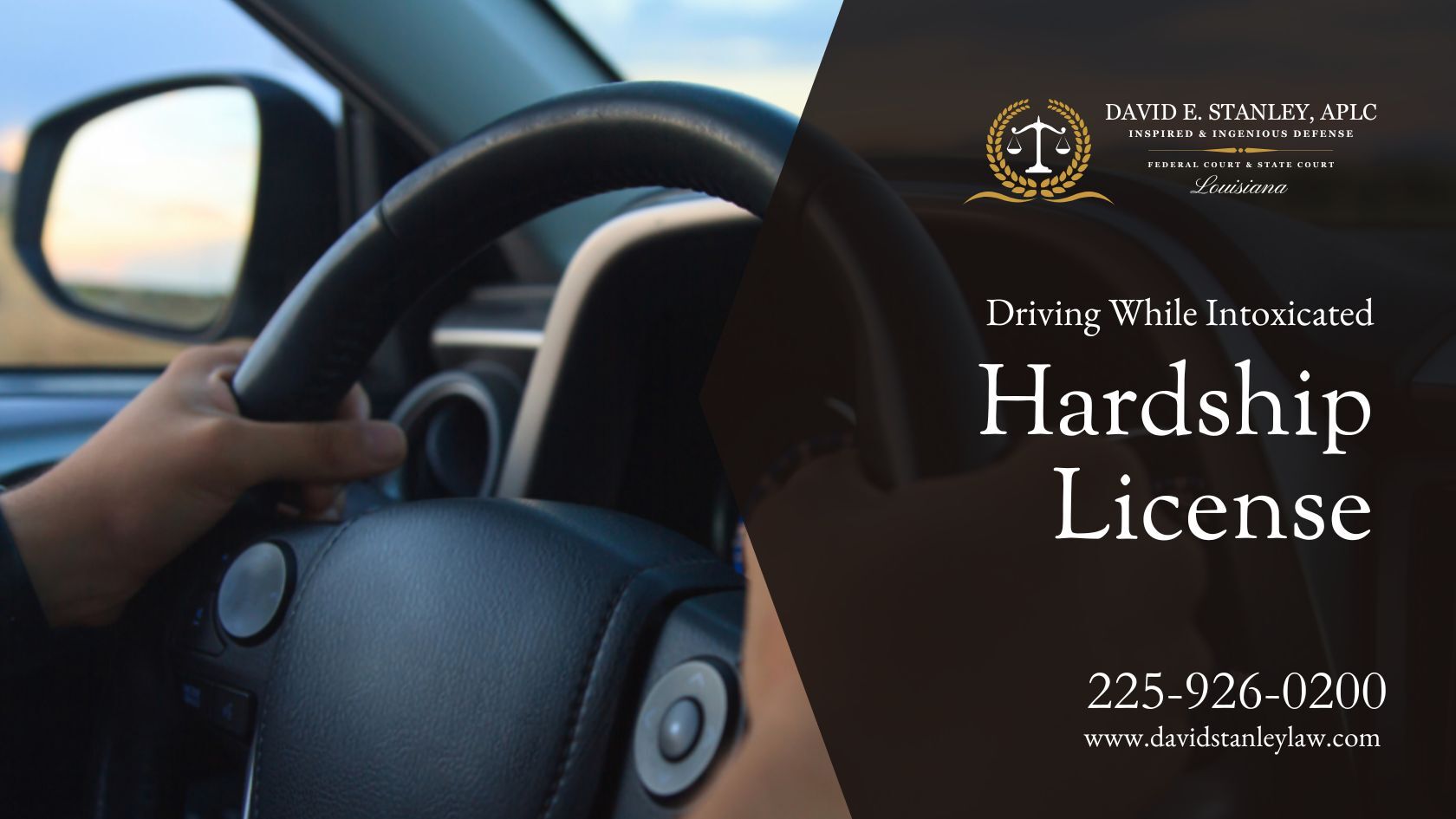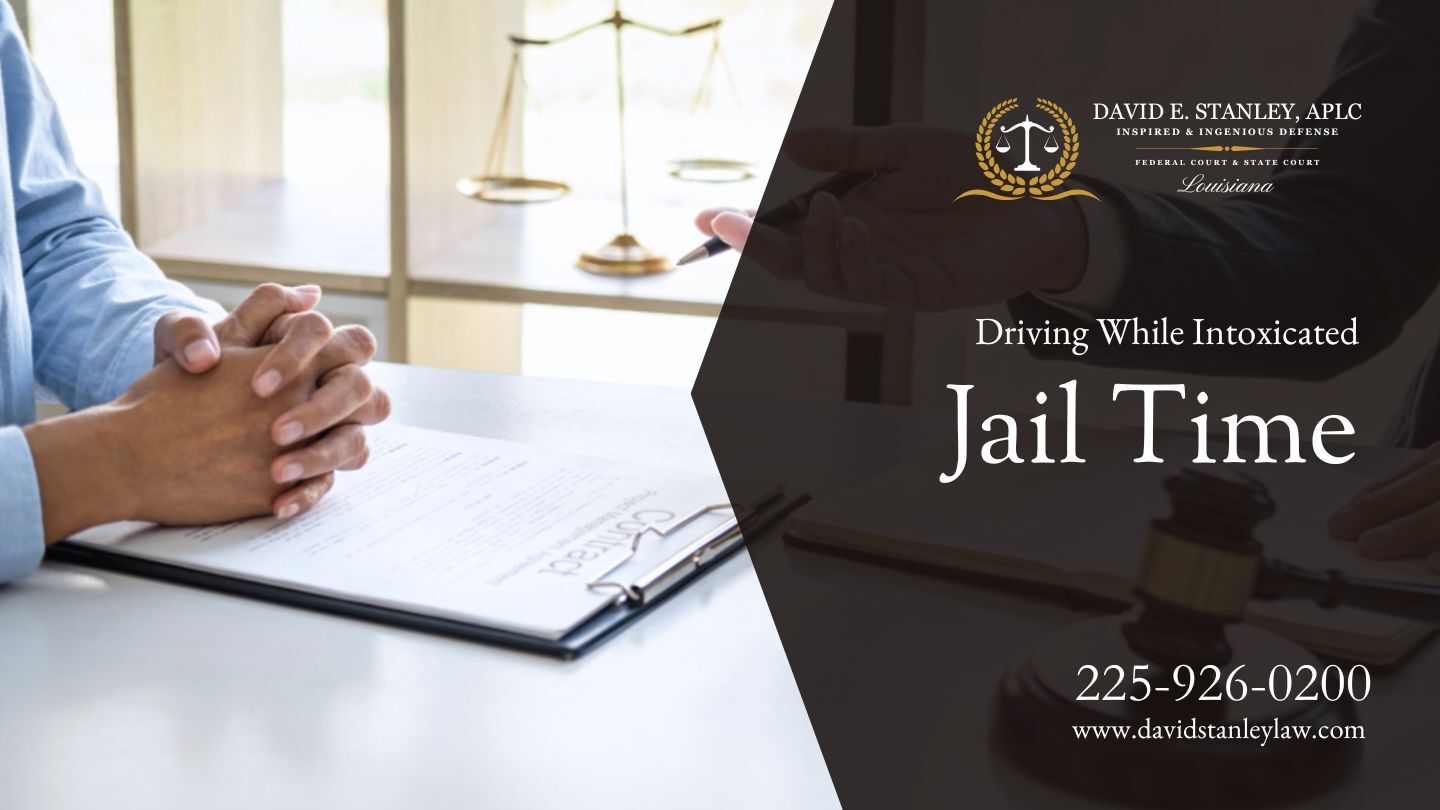Baton Rouge, LA Hardship License
Table of Contents
ToggleLosing your driver’s license after a DWI can turn your life upside down. Suddenly, simple tasks like getting to work, picking up groceries, or taking your kids to school become major challenges. The stress of not being able to drive can feel overwhelming, leaving you wondering how you’ll manage your daily responsibilities. It’s a situation that can impact your job, your family, and your overall quality of life.

At David E. Stanley, APLC, we help clients navigate the hardship license process after a DWI. We’ve assisted many in Baton Rouge and Louisiana in restoring their driving privileges, allowing them to continue working and supporting their families. With our knowledge of Louisiana law, we guide you through every step of the application process.
Understanding Hardship Licenses in Louisiana
A hardship license, or restricted license, allows individuals with suspended licenses to drive under specific conditions. In Louisiana, this license is typically granted to those with a DWI conviction, enabling them to drive for essential tasks and continue their daily responsibilities while their regular license remains suspended.
What Is a Hardship License?
A hardship license is a temporary permit that lets you drive for specific purposes during your suspension, such as going to work, school, or medical appointments. While it doesn’t restore full driving privileges, it offers essential support for those needing transportation to meet basic needs.
Who Can Apply for a Hardship License?
In Louisiana, eligibility for a hardship license is generally available to individuals who have had their license suspended due to a first-time DWI offense, but specific circumstances can affect eligibility. However, each case is unique, and factors such as your driving record and the specifics of your DWI charge can affect your eligibility. It’s important to note that hardship licenses are typically available for non-commercial drivers with Class D or E licenses. Commercial drivers (Class A, B, or C) may not be eligible.
The Process of Obtaining a Hardship License
Obtaining a hardship license involves several key steps:
- Complete the initial suspension period: Typically, you must wait 30 days after your license suspension before applying.
- Gather required documentation: This may include proof of employment, school enrollment, or medical needs.
- File an SR-22 form: This certificate from your insurance company confirms you have the necessary coverage.
- Install an ignition interlock device: This may be required, depending on your DWI case.
- Petition the court: Present your need for a hardship license with supporting documents.
- Pay necessary fees: These may include court costs, reinstatement fees, and the hardship license fee.
- Attend hearings: You may need to appear in court to support your case for a hardship license.
Restrictions and Conditions of a Hardship License
A hardship license comes with several key restrictions, including:
- Limited driving hours
- Restricted routes or areas
- Approved purposes, such as work, school, or medical appointments
- Vehicle restrictions, typically requiring an ignition interlock device
Violating these terms can result in further suspension or revocation of your license.

Benefits of a Hardship License
A hardship license offers key advantages, including:
- Employment: Drive to and from work to maintain your job.
- Education: Attend classes as a student.
- Medical Care: Access necessary medical appointments.
- Family Needs: Manage essential family duties, like grocery shopping or childcare.
Common Challenges in Obtaining a Hardship License
Obtaining a hardship license can be challenging. Common obstacles include:
- Proving necessity: Demonstrating the need for driving privileges.
- Meeting requirements: Incomplete steps may delay or prevent approval.
- Understanding restrictions: Adhering to all limitations of your hardship license.
- Handling paperwork: The application requires extensive documentation and can be confusing.
How David E. Stanley, APLC Can Help
The hardship license process can be challenging, especially after a DWI. At David E. Stanley, APLC, we are here to help you:
- Assess your eligibility for a hardship license
- Guide you through the application process
- Collect and organize the necessary documentation
- Represent you in court hearings
- Clarify the restrictions and conditions of your hardship license
- Address any issues during the hardship license period
We aim to simplify the process and help you regain stability in your life.
Maintaining Your Hardship License
After receiving your hardship license, it’s important to follow all rules and restrictions. Here are a few tips:
- Carry your hardship license and necessary documentation while driving
- Follow approved routes and driving hours
- Drive only for authorized purposes
- Keep your ignition interlock device, if required
- Attend all mandatory meetings or classes
- Avoid further traffic violations or alcohol-related offenses
A hardship license is a privilege, not a right. Violating the terms can lead to immediate revocation and additional penalties.
Life After a Hardship License
A hardship license is a temporary solution. Once you’re eligible, you can reinstate your full driving privileges by:
- Completing your suspension period
- Paying any fines or fees
- Finishing required education or treatment programs
- Passing necessary tests or exams
- Providing proof of insurance
David E. Stanley, APLC, can guide you through the reinstatement process to help you meet all requirements for regaining your full license.
Frequently Asked Questions
How Long Does It Take To Get a Hardship License?
How long it takes to get a hardship license varies depending on individual circumstances. Typically, the process can take several weeks from the time of application to approval.
Can I Drive Anywhere With a Hardship License?
No, you cannot drive anywhere with a hardship license. A hardship license typically restricts you to specific routes and destinations related to work, school, or medical appointments.
What Happens if I Violate the Terms of My Hardship License?
If you violate the terms of your hardship license, you may face severe consequences. These can include immediate revocation of your hardship license, extended suspension of your regular license, and additional legal penalties.
Can I Get a Hardship License for a Second DWI Offense?
Yes, you can get a hardship license for a second DWI offense, but it’s much more challenging to obtain. In many cases, you may not be eligible, but it’s best to consult with an attorney to understand your options.
How Much Does a Hardship License Cost?
How much a hardship license costs can vary. The total cost includes application fees, potential court costs, and expenses related to requirements like ignition interlock devices and SR-22 insurance.
Work With David E. Stanley, APLC

A suspended license after a DWI can create significant challenges, but a hardship license offers a lifeline to maintain key aspects of your life while working toward reinstating full driving privileges. The process can be complex, but with the right guidance, it becomes manageable.
At David E. Stanley, APLC, we’re dedicated to helping you navigate this process. Our team is familiar with Louisiana’s DWI laws and the hardship license process, and we’re here to support you every step of the way, from eligibility assessment to maintaining compliance with restrictions. Don’t let a suspended license disrupt your life – contact us today to discuss your options for a hardship license.
David E. Stanley, APLC
1055 Laurel Street, Suite 2 Baton Rouge, LA 70802
225-926-0200


